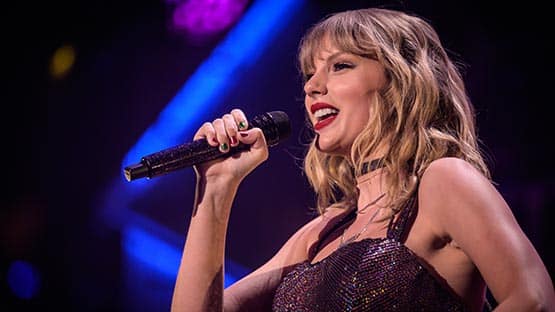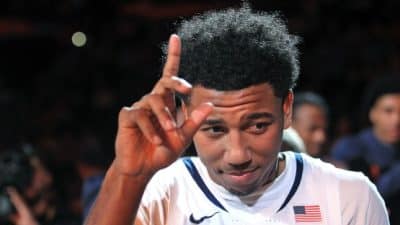
The reason they won’t: there’s a sense that the front office and ownership don’t want to be perceived as having given in on losing one of MLB’s marquee players.
Which is a horrible reason to hamstring one’s team, short term and long term.
Short term, it’s time to concede that Harper is, in fact, moving on, though it’s hard to imagine where to.
And, yes, everybody says Philadelphia, though by now everybody has Philadelphia signing not only Harper, but also Manny Machado, and making a trade for Mike Trout, while also resurrecting Joe DiMaggio, Ted Williams and Honus Wagner.
And, of course, the Yankees, everybody has Harper going to the Yankees.
Or the Dodgers. Or wherever.
Honestly, it shouldn’t matter. Let him walk. Yes, Harper will be 26 in 2019, so he’s not even yet in the prime of his career, from one way of looking at when guys are in the prime of their career, but he’s also a seven-year veteran, so you have to wonder if age isn’t just a number with Harper.
And, truth be told, even with seven seasons to judge him by, we’re still only thinking about Harper in terms of his, wait for it, his potential.
Guy hit .249 last year, slashed .249/.496/.889, with 34 homers and 100 RBIs.
Would you believe, by the way, that his 100 RBIs constituted his first 100-RBI season. Hard to fathom, that, for a guy commanding $400 million for 10 years.
He’s had one season worthy of that kind of contract consideration, and it was way back in 2015, when he was the NL MVP after slashing .330/.649/1.109 with 42 homers and 99 RBI with a 10.0 WAR, one of only two seasons – the other being his rookie year way back in 2012, where he was above 5.0 WAR.
Just based on WAR, Harper was only the tied-for-fourth most valuable everyday Nat in 2018. More valuable: Anthony Rendon (4.2 WAR), Trea Turner (4.1 WAR) and rookie Juan Soto (3.0 WAR).
Ryan Zimmerman tied for fourth with Harper with 1.3 WAR, in just 85 games (Harper played in 159), and Adam Eaton wasn’t far behind, at 1.1 WAR (in 95 games).
Rendon was also the most valuable everyday National in 2017 (6.0 WAR, to Harper’s 4.7), and Daniel Murphy (4.5 WAR), Rendon (3.9 WAR) and Turner (3.4 WAR), among others, were more valuable than Harper (1.5 WAR) in 2016.
But, there’s still that allure, that fleeting notion that Harper will be that Harper of 2015 again, and for the next 10 years.
Reality check: it ain’t going to happen, and committing somewhere between $300 million and $400 million over the next 10 years to chase the dream would only serve as a millstone around the franchise’s neck for the next decade.
The wiser course of action would be to use whatever money the Nats would otherwise sink into Harper into a third frontline starting pitcher, for example, Cleveland’s Corey Kluber (20-7, 2.89 ERA, 0.991 WHIP in 2018), who is reportedly on the trade block, and is under contract at team-friendly prices ($17 million in 2019, $17.5 million in 2020, $18 million in 2021) for the next three years.
Imagine, if you will, a three-headed monster of Kluber, Max Scherzer (18-7, 2.53 ERA, 0.911 WHIP in 2018, under contract through 2021) and Stephen Strasburg (10-7, 3.74 ERA, 1.20 WHIP in 2018, under contract through 2023) for at least the next three seasons.
Trade for Kluber, and you’re still between $15 million and potentially up to $25 million below what you might need to pay Harper to remain in the District.
Which means, flexibility to do something to shore up your catching situation. One idea there: ahem, J.T. Realmuto (.277/.484/.825 slash, 21 HR, 74 RBI, 4.3 WAR in Miami in 2018, not eligible for free agency until 2021).
You’re going to have to part with some of your prized farmhands – at least one of the Kiebooms, catcher Spencer or shortstop Carter, maybe both. You’d prefer, if you have to give up a young outfielder, that it be Michael A. Taylor, who has shown so much promise, but seems to have a lower ceiling than Victor Robles.
Soto (.292/.517/.923 slash, 22 HR, 70 RBI in 116 games as a 19-year-old rookie in 2018), meanwhile, looks like the next coming of Harper (whose 19-year-old rookie season, back in 2012, saw him post a .270/.477/.817 slash line, with 22 HR and 59 RBI in 139 games).
An everyday lineup built around Soto, Rendon, Turner, Eaton, Zimmerman and Robles – plus maybe a Realmuto? – and a starting rotation with a Scherzer, Strasburg and a Kluber (?), is better in the short term, in 2019, and for the next three years.
That’s the direction the Nats need to take, and they need to start going in this direction now. Harper and his agent, Scott Boras, made it clear when they turned down the team’s 10-year, $300 million offer late in the 2018 season that they’re looking elsewhere.
Let ‘em find their money. The Nats don’t need a megastar; they need to build a sustainable winner, and they can, by moving on.










